Table of Contents
Overview – Blood Group Compatibility
Understanding blood group compatibility is essential for safe transfusion practice. The ABO and Rh systems form the basis for determining compatible blood types and preventing serious reactions. In clinical medicine, this knowledge supports everything from antenatal care to emergency transfusions. This article outlines the principles of blood typing, the immunology behind transfusions, and the safe use of blood products.
Definition
- Blood grouping refers to classification of blood based on antigen presence on red blood cells
- Transfusion involves giving blood or blood components from a donor to a recipient
- Compatibility is critical to avoid haemolytic transfusion reactions
Blood Group Antigens
1. ABO System
- Determined by carbohydrate antigens on RBC membranes
- Governed by A, B, O alleles:
- A & B = codominant
- O = recessive
- Blood types:
- Type A = A antigen, anti-B antibodies
- Type B = B antigen, anti-A antibodies
- Type AB = A & B antigens, no antibodies
- Type O = no antigens, both anti-A & anti-B antibodies
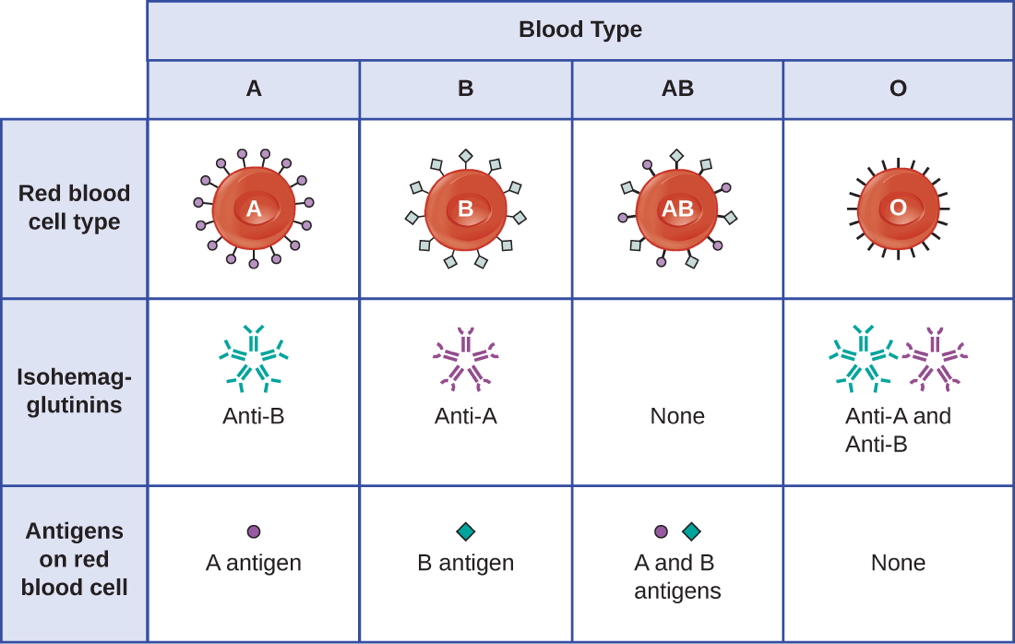
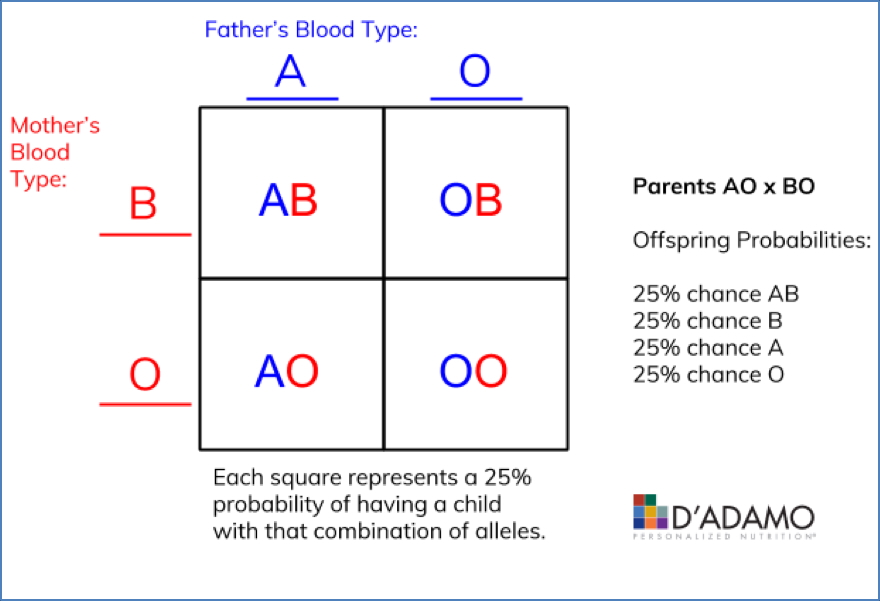
2. Rh (Rhesus) System
- Refers to presence/absence of RhD antigen
- RhD+ → antigen present
- RhD– → antigen absent
- RhD-negative patients must avoid RhD-positive blood (unless emergency)
- Rh-incompatibility in pregnancy:
- Rh– mother with Rh+ fetus → risk of haemolytic disease of the newborn
- Preventable with anti-D immunoglobulin
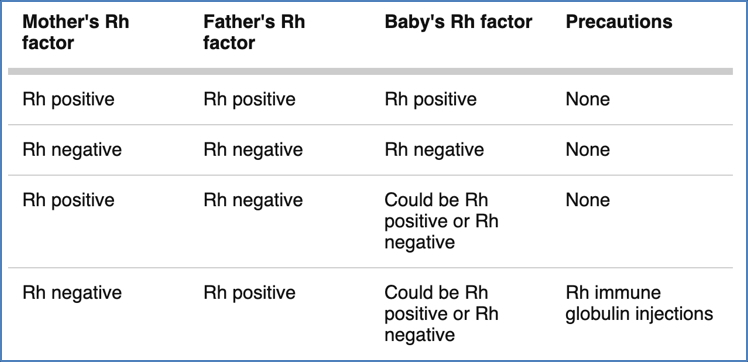

Blood Group Antibodies
ABO Antibodies
- Naturally occurring (IgM)
- Present in individuals lacking the corresponding antigen
- Can cause acute haemolytic transfusion reactions if mismatched
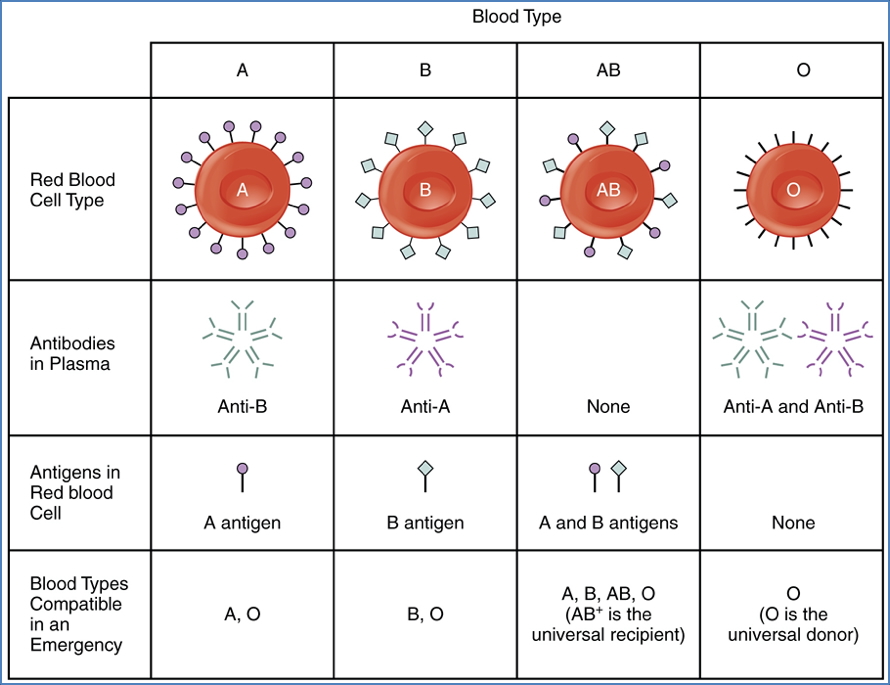
Rh Antibodies
- IgG antibodies, produced after sensitization (transfusion, pregnancy)
- Cross the placenta → risk of fetal haemolysis
- Clinical relevance in transfusion and antenatal care
Antiglobulin Tests (Coombs’ Test)
Direct Coombs (DAT)
- Detects in vivo antibody/complement coating of patient’s RBCs
- Used to investigate autoimmune haemolytic anaemia

Indirect Coombs (IAT)
- Detects free antibodies in patient serum
- Used in cross-matching and antenatal screening

Blood Donation Process
1. Donation
- ~450mL taken from screened, healthy donors
- Frequency: 2–3 times/year
- Anticoagulants and additives preserve cells (NOT frozen)
2. Screening
- HIV, Hep B/C, HTLV, CMV, Syphilis
- Serology: ABO/Rh typing + antibody screening
3. Blood Typing
- ABO typing via agglutination tests
- RhD typing via antibody reaction
- Rh C, E typing and antibody screening
4. Pre-Transfusion Testing
- Recipient blood typed
- Cross-match done to detect incompatibility
- Group-specific blood = faster
- Cross-matched blood = safer
Blood Products
Whole Blood
- Used in acute haemorrhage
Packed Red Blood Cells (PRBCs)
- Indications:
- Anaemia, trauma, surgery, marrow failure, sepsis
- Expect ↑10g/L Hb per unit
Platelet Concentrates
- Indications:
- Thrombocytopenia, marrow failure, chemo-induced cytopenia
Granulocyte Concentrates
- Used in neutropenia with infection (e.g. post-radiation)
Plasma
- Contains clotting factors
- Used in bleeding disorders (e.g. liver disease, warfarin reversal)
Cryoprecipitate
- Rich in Factor VIII & fibrinogen
- Used in haemophilia, fibrinogen deficiency, DIC
Cryosupernatant
- Contains albumin, immunoglobulins
- Used in:
- Hypovolaemia (volume expander)
- Hypoalbuminaemia (e.g. nephrotic syndrome, burns)
- Immunodeficiency

Blood Transfusions
Compatibility
- Mismatch = haemolytic transfusion reaction
- Universal donor = O-negative
- Universal recipient = AB-positive
Emergency Use
- O-negative used when immediate transfusion needed

Complications of Blood Transfusion
Immediate – Immunological
- Acute haemolytic reaction (ABO mismatch)
- Fever, hypotension, shock
- Urgent management: fluids + diuretics
- Febrile non-haemolytic reaction (sensitisation)
- Allergic/anaphylactic reaction (IgE-mediated)
Immediate – Non-Immunological
- Bacterial contamination
- Hyperkalaemia
- Circulatory overload
- Coagulopathy
Delayed – Immunological
- Delayed haemolytic reaction
- Alloimmunisation
- Graft-versus-host disease
Delayed – Non-Immunological
- Iron overload: long-term transfusions → liver, heart damage
- Infection risk: HIV, hepatitis, parasites
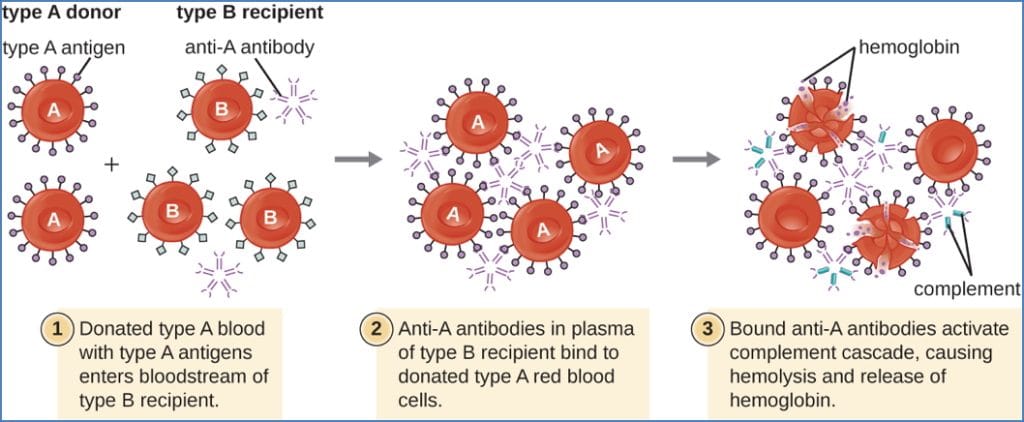
Summary – Blood Group Compatibility
Blood group compatibility underpins safe transfusion practice. The ABO and Rh systems, antibody screening, and cross-matching all work to prevent serious haemolytic reactions. Blood products are tailored for specific clinical needs — from trauma resuscitation to immunoglobulin replacement. For a broader context, see our Blood & Haematology Overview page.